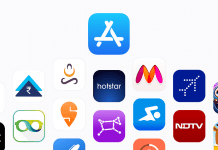The company also modified how it reports information, giving users a more interactive, detailed site.

James Martin/CNET
Apple’s getting more government requests for data. The tech company is making it easier to see where and what kind of data is being demanded.
On Thursday, Apple released its biannual transparency report, which details how frequently governments and private parties request customer data. With more than 1.3 billion devices active around the world, governments are increasingly looking to Apple and its technology to gain information about users. Those requests have been rising over the years, and the first half of 2018 was no different.
Globally, Apple received 32,342 device requests, with 42 percent of them coming from Germany. Apple noted the “high volume of device requests [in Germany was] predominantly due to stolen devices investigations.” The US had the second-highest number of requests, at 4,570. In the July to December 2017 period, Apple received 29,718 device requests.
Apple sought to make its reporting process simpler to understand with its new Transparency site. In the past, Apple would release a brief report with a limited amount of data, including the number of device requests received in each country and the number of device requests for which data was provided.
The interactive site lets users toggle between countries and time periods to see how the requests have changed. It’s similar to the display rivals, such as Microsoft, offer when it comes to transparency reports.
Apple has long helped law enforcement agencies pull data from locked iPhones. But its willingness to help has changed over the past few years as the number of requests increase and as the government faces backlash over its surveillance tactics. Apple fought a very public battle against the FBI in 2016, and it has taken a strong stance in favor of protecting customer privacy.
Apple declined to comment beyond its report.
National security letters
Apple also offered more detail in the number of national security letter requests it receives. Previously, it simply provided the number it received and grouped it together with requests under the Foreign Intelligence Surveillance Act (FISA). It now plans to separate the two.
Apple also will disclose the number of FISA requests that involved content such as stored photos, email, iOS device backups, contacts and calendars, as well as the number that involved non-content data, such as subscriber or transactional information and connection logs.
The latest report doesn’t include the number of FISA requests because of a legally required six-month reporting delay.
In its last report, Apple said it received 16,000 to 16,249 national security letter and FISA requests from July to December 2017. In the first half of 2018, it received 0 to 499 national security letter requests.
Apple now provides the national security letter data in less granular numbers, though. In the past, it would detail the requests in bands of 250. Now it’s reporting in bands of 500.
National security letters are issued by the FBI and don’t require a judge’s sign-off. Critics of national security letters, like the Electronic Frontier Foundation, say they “allow the FBI to secretly demand data about ordinary American citizens’ private communications and Internet activity without any meaningful oversight or prior judicial review.” Companies that receive national security letters are subject to gag orders, which means they can’t even disclose they’ve received such orders — unless the letters become declassified.











































